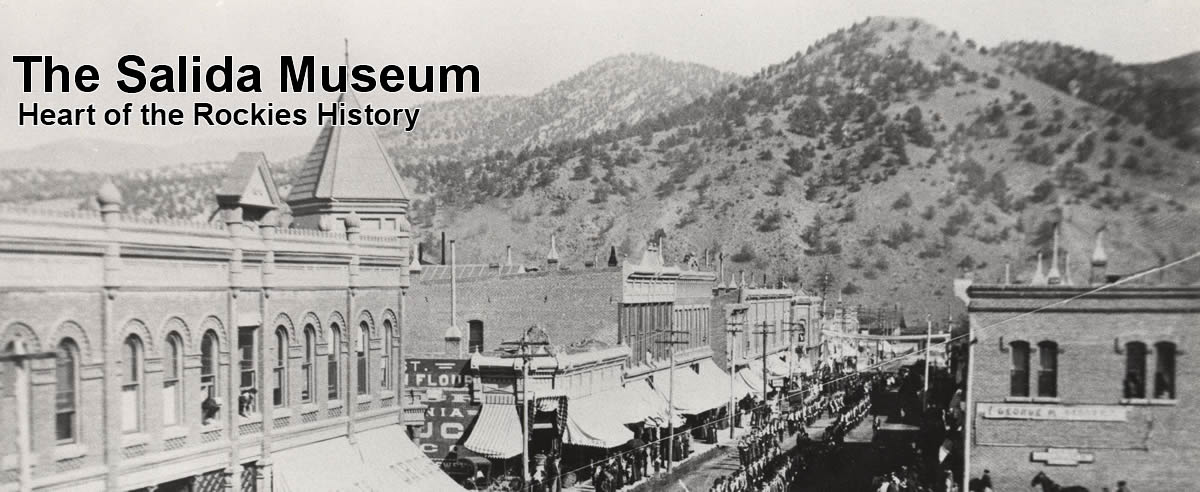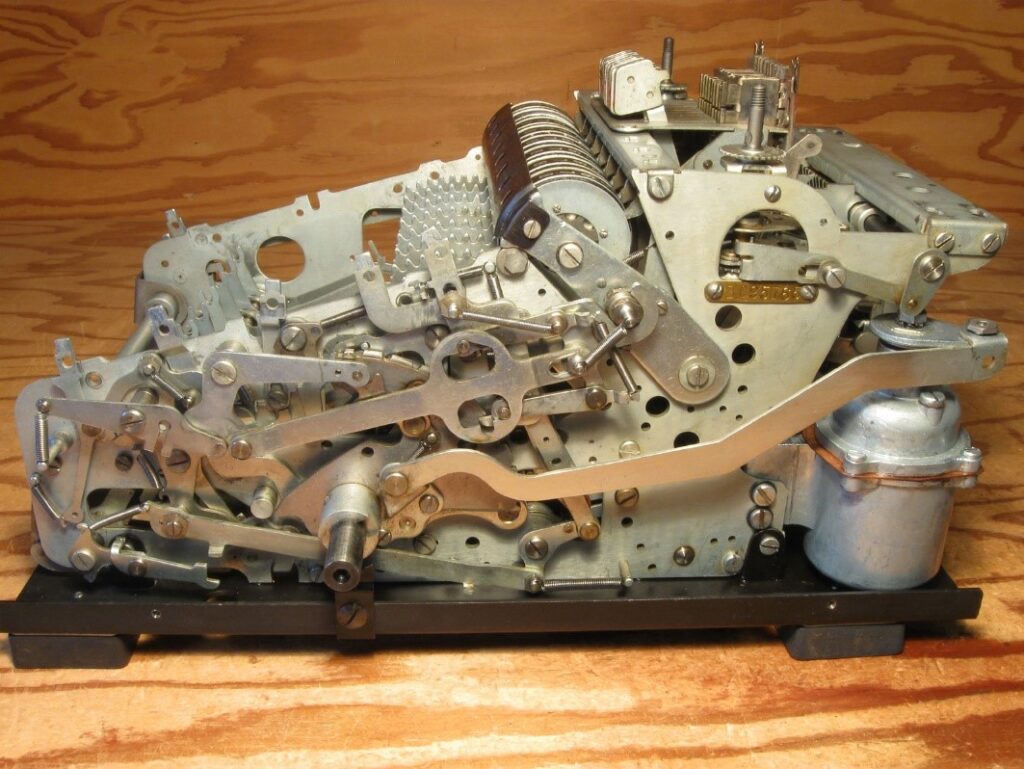WISHING YOU CONTINUED HEALTH AND SAFETY!
Museum Open House
The Salida Museum will be presenting our 2024 Open House on Saturday, May 25, from 10am. to 4pm. Admission will be free and refreshments will be served. Of course, all the exhibits will be available for your inspection.
Steve Chapman, local Salida historian, will be giving presentations on Salida history at 1pm, 2pm, and 3pm. Steve is a lively speaker, and his knowledge of Salida history is extensive. Don’t miss this chance to hear him.
To all of you who attend museum functions or in other ways benefit the museum, we thank you for your continued support. Special thanks goes to the volunteer docents who keep the museum open for visitors.
“Healing in Chaffee County, Colorado, and Surrounding Areas”
Health Care and health issues have changed a lot since Salida was founded in 1880. The latest project for board members at the Salida Museum is putting together a compilation of newspaper articles related to health care and healing from 1880 to the 1960s. The articles are from The Mountain Mail, which has been Salida’s newspaper for 144 years. At different times in the newspaper’s history it was the Salida Mail, the Salida Record and the Salida Mail – Record, but owned by the same company, which is a pretty remarkable history for any business. Many thanks to O’Rourke Media, current owner of The Mountain Mail, for allowing the museum to reprint these fascinating clips from the past.
Museum board member, Arlene Shovald, has had a lifelong interest in health care. When she started the popular “Past Tense” column in The Mountain Mail around 1981, she found herself going back over 100 years of Salida history, searching for excerpts of interesting stories from the past to reprint. The articles related to medicine, accidents and anything related to health care were fascinating. Things like diphtheria, small pox, pest houses, the poor farm, etc. told the story of what our forefathers and mothers had to deal with in settling the “wild west.”
She kept a journal of the health related articles during her 44 years as a reporter at The Mountain Mail, mostly just for her own interest.
“They were just sitting in my filing cabinet and I thought it might be interesting to put them together for the museum’s files,” she said.
The effort has turned into a bigger than expected project with board members Earle Kittleman and Larry Kovacic editing the re-typed copy and Earle taking on the job of finding photos and clips from old newspapers to illustrate some of the articles.
“It’s been fun to search for historic pictures and news clips to illustrate Arlene’s text, and it’s amazing how much historical data is online these days,” Earle said.
The articles included are mainly from 1880 to about 1930, with fewer items after that date because by then health care was becoming more modern and not quite as interesting as in the early days.
Eventually the project will be published and available at Salida Museum, Salida Regional Library and possibly even for purchase at the museum assuming there is enough interest.
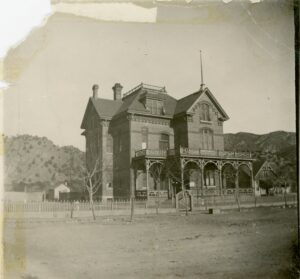
Digital Archiving at the Museum
by Mike Rosso
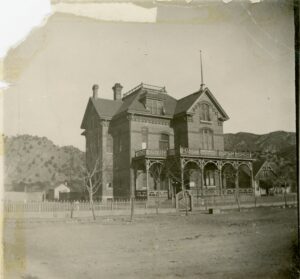
I have been scanning and archiving the Salida Museum photo collection for over a year now. The goal is to digitize all original and second generation (copies of originals) images in the collection. The photographs are being scanned on a flatbed scanner, with slight exposure adjustments to improve image quality, and then saved as JPG and uncompressed TIFF files onto an external hard drive and onto the “cloud.”
Each photo is labeled with its ascension number, given a title, and embedded with meta tags to help with future search functions. Eventually, many of these photos will be displayed on our website and made available to authors, researchers and others for reproduction. There are hundreds, if not thousands of these photos in the collection but only photos that can be positively identified as taken in the Salida region are being scanned. Since I’m doing this project in my leisure time, it may be a few years before the entire collection is finished. Meanwhile, the Salida Museum donated all of its historic negatives to the Salida Library where Joy Jackson has been meticulously scanning and archiving those as well. Those can be found online at: https://digital.salidalibrary.org/salida-museum-collection/
I worked as a commercial photographer for many years and did photo restoration for museums throughout Southwestern Colorado in the “pre-digital” days. Now mostly retired, I consider this project an essential labor of love to help maintain records of these photos in case of damage to the originals as well as making them available for use to the general public.
There are some great stories to be found in these old “silver” prints. The above photo is of a building in downtown Salida in the 1930’s. If anyone knows a story about it, let us know.
Hats Were a Fashion Statement Back in the Day
by Arlene Shovald, Ph.D.
There was a time when hats were almost a necessity for a lady to be well dressed. You didn’t even go to the grocery store without a hat, and certainly not to church. So millinery (designing hats) was a viable and exciting career for a young woman.
The late Ruth Elofson was a 12 year old orphan when she came to Saida to live with her uncle and cousin in 1904. Since she was an orphan, she had to quit school in the 10th grade and went to work at Miss Stokes Millinery Shop to help contribute towards her own support.
At the time of this interview, in 1979, she was 87 years old and was pleased to recall her memories of Salida and that first job.
Miss Stokes Millinery Shop was located at 300 F Street, where Su Casa Furniture and Sleep Shop is today. The millinery shop occupied just a small space in the front of the building. The pay was 25 cents an hour which was pretty good wages in about 1907.
Her job was mostly making the wire hat frames but there were times when she got to design a hat herself and one she remembers was a special Easter bonnet she worked very hard on.
“I was shattered when a girl who bought the hat completely reshaped it to suit her own tastes,” Ruth said. “Wires were sticking out in all the wrong places. It just broke my heart.”
There were other millinery shops in town at that time. One was owned by Mrs. Hall and Mrs. Gorman. The shops bought their supplies from Denver but the hats were shaped and decorated by hand. Beaver hats were especially popular in those days and they had to be lined. She remembered hurting her fingers many times while sewing linings into those stiff hats.
Another side job of the millinery business was posing with the hats for Hays Photography Studio on F Street. Photos of the hats were used for calendar pictures. She was about 20 years old at that time.
She recalled other fashions of the day. Girls were supposed to act like ladies in those days and they wore dresses all the time.
“I can remember vowing I’d never wear mine shorter than ankle length,” she said, “but times change.”
If the ladies of those times could come back today they would be shocked at mini skirts, shorts, jeans and leggings!
Another Salida memory for Ruth Elofson dated back to Decoration Day (later called Memorial Day) in 1904 when she first arrived in Salida. The townsfolk were celebrating by launching boats of flowers from the F Street bridge to float down the Arkansas River to honor veterans.
A short distance away, which would be about off the north end of D Street, there was a hanging bridge over the river that railroad employees used to get to and from the railroad yards. A crowd of spectators gathered on the bridge to watch the flower boats and the bridge broke, dumping the throng of people into the river. Seven people drowned.
“To my knowledge, some of those bodies were never recovered,” she said.
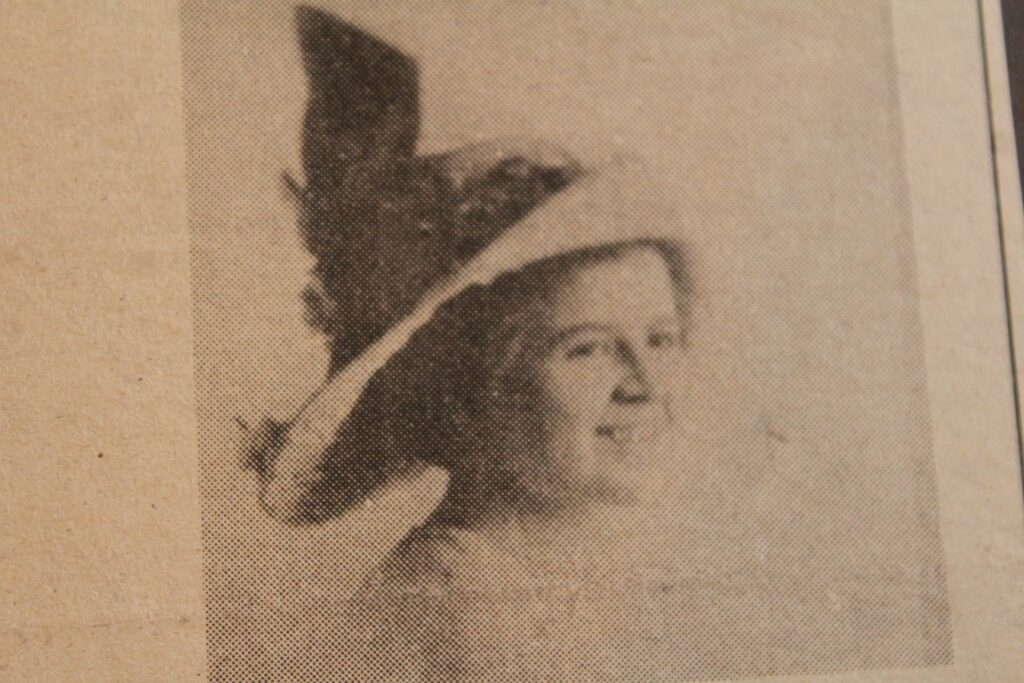
Winter Roundup
by Earle Kittleman
Over the winter one of the biggest projects was to sort through and organize and try to identify memorabilia from Neils Café. Menus, greeting cards, snapshots, negatives, letters, legal documents, news clips and funeral programs all came in a jumble in a cardboard box found somewhere in the recesses of the building at 140 North F Street, which had been a popular eatery in Salida for most of the 20th century. Stephanie Kuhn of Señor Murphy Candymaker, current occupant of the building, made the donation.
The building dates to 1909 and catered to railroad workers. As the Rio Grande Café it was subleased by the D&RG railroad. After 1944 it was owned by Neil and Mae Prunty who received a subsidy from the railroad to stay open 24 hours to serve railroad men day and night. Neil named it Shamrock Café for his native Ireland and then it became Neil’s Café from the 1950s through the 1980s. Salidans today remember the place as Mama D’s with much the same diner décor.
The cartoon characters that can still be seen on the interior walls at Senor Murphy’s represent employees and customers who frequented Neil’s in the old days. The characters include Salida police chief Julius Maestos and Annabelle Furphy who was a high school student waitress at the time.
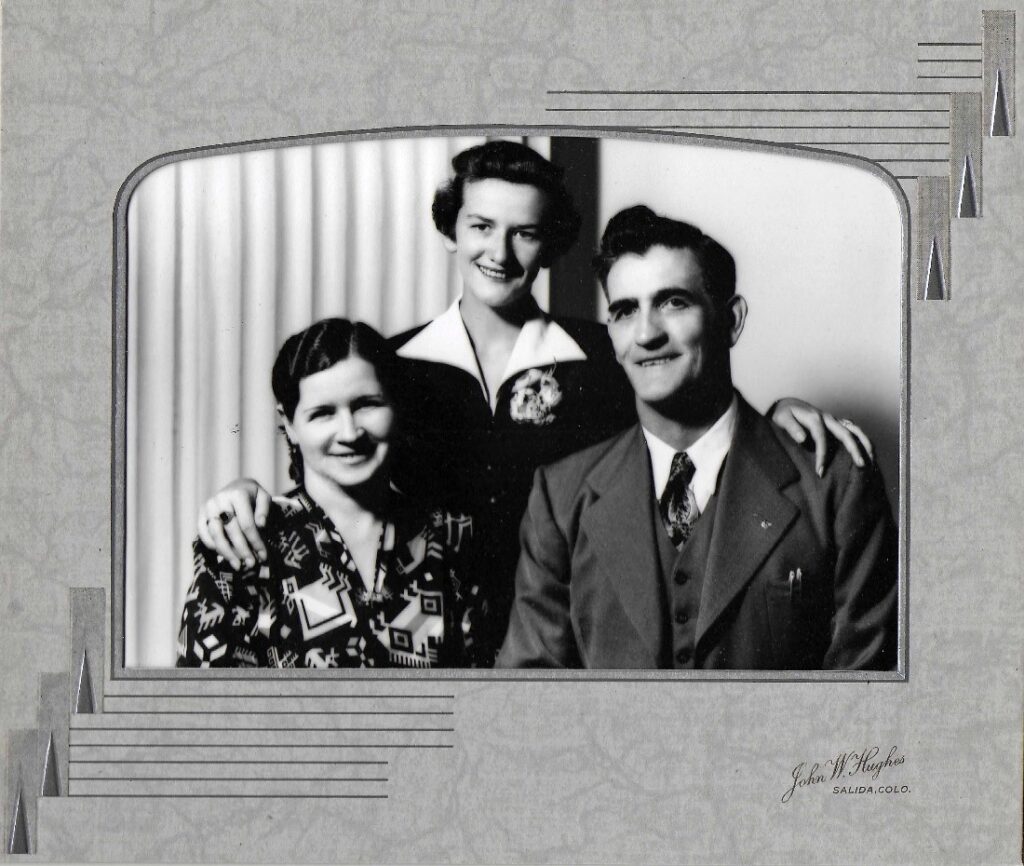
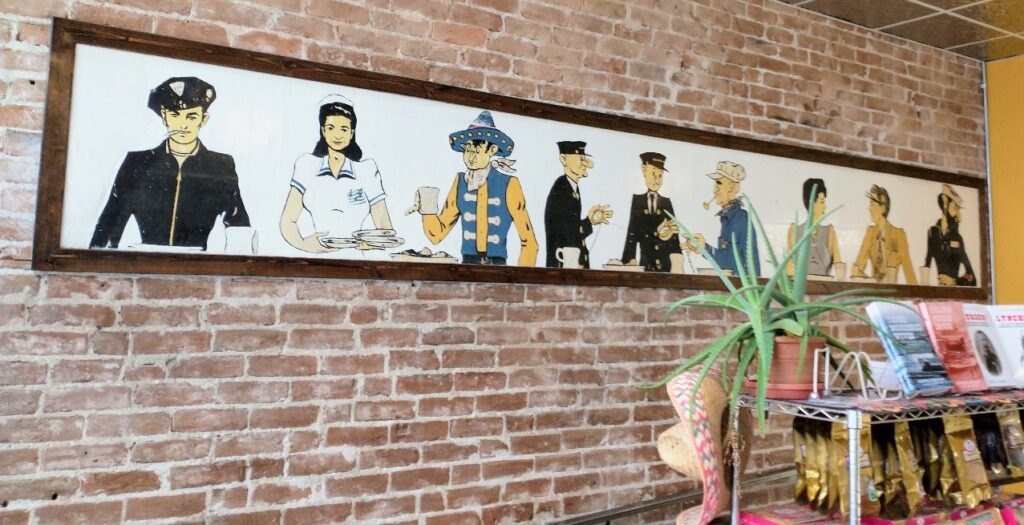
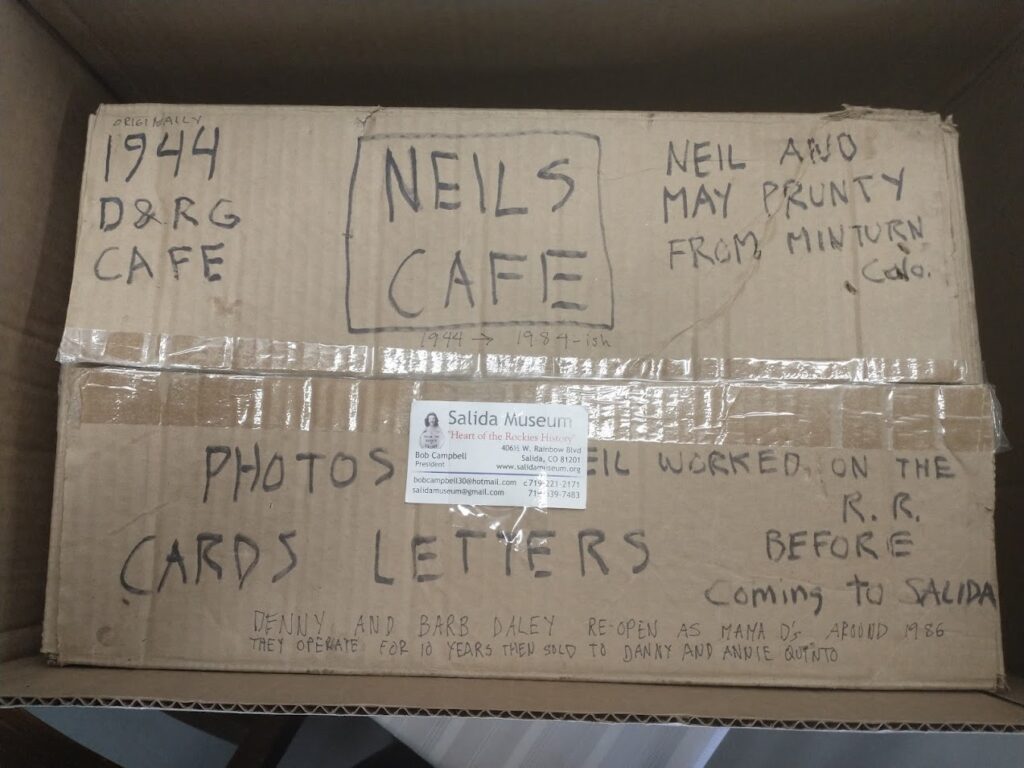
In December, Tom Wolf donated a cash register that he bought at a yard sale years ago from a woman who said it came from the Band Box Cleaners at 119 N. F Street in Salida. The machine was made by R. C. Allen Business Machines and dates to the 1930s. It weighs about 40 lbs. due to the mechanical moving parts inside that can calculate to four places.
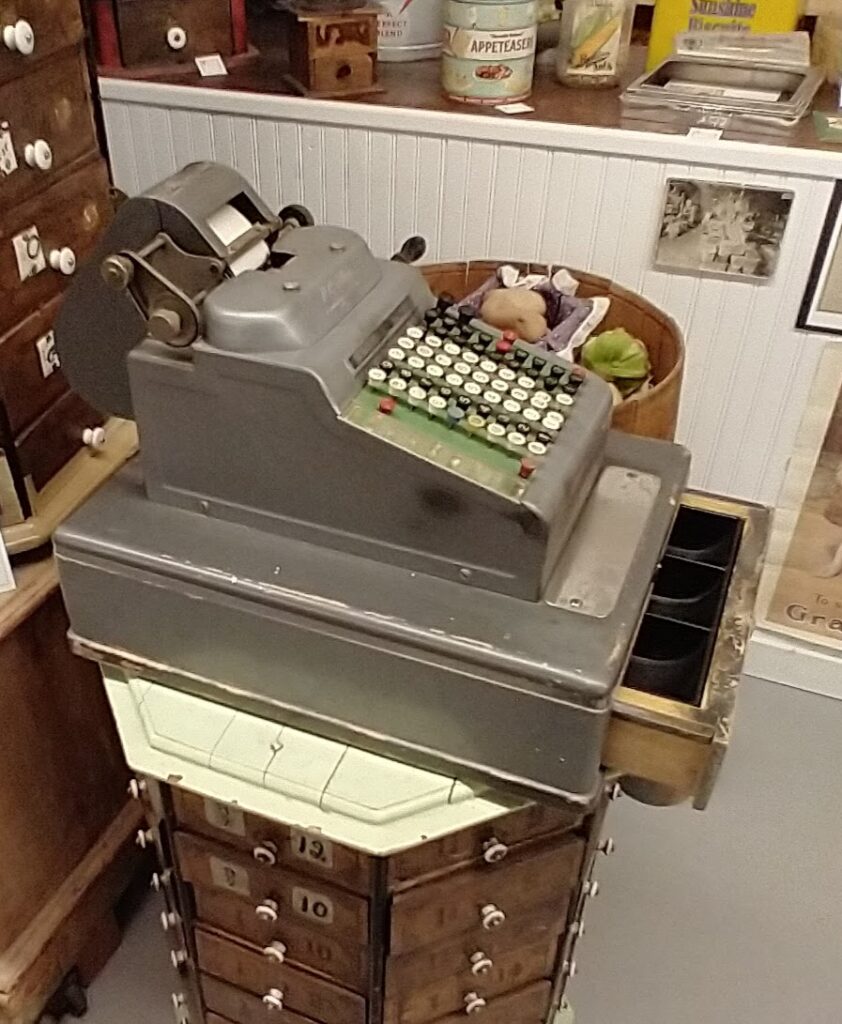
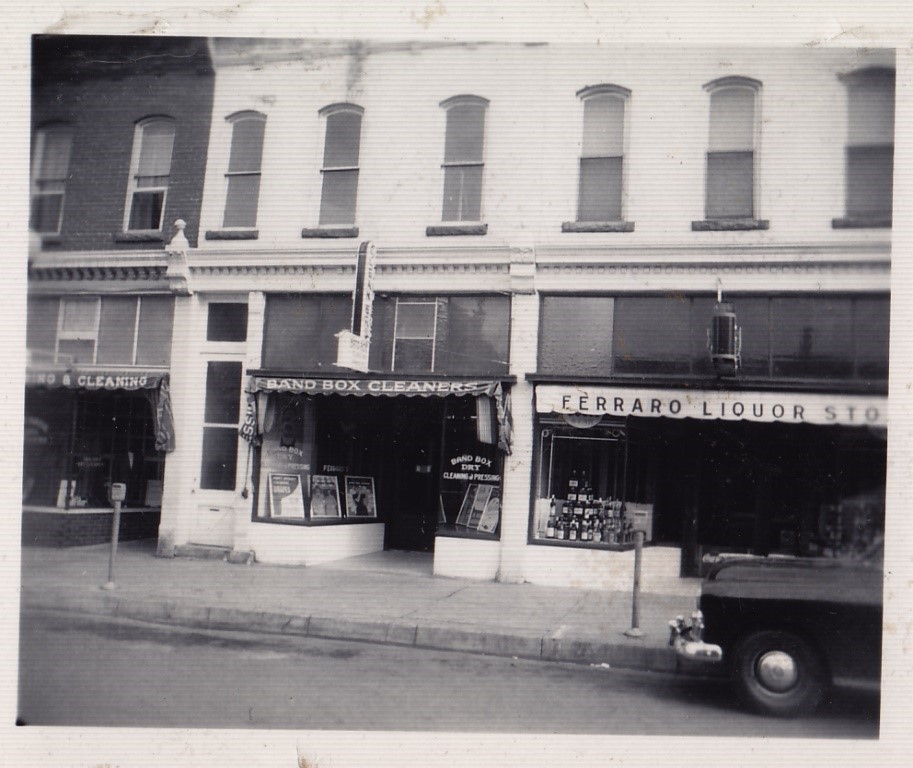
In February, we added to the railroad collection a vintage 1920s electric lantern, a gift from Gwen Meythaler of Salida. Gwen said her father loved trains and she found the lantern in her father’s garage in Salida.
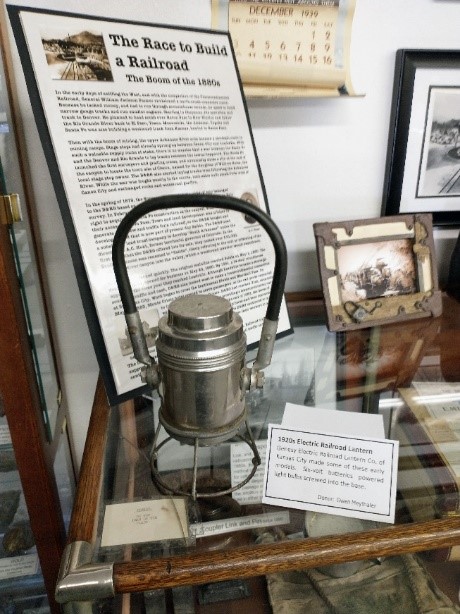
Museum Exhibits
by Bonnie Konopka
Some fun Salida Museum finds:
3-D Stereoscopic Viewers
During the Victorian age this was a popular form of home entertainment. The Museum has a large collection of stereo cards which are pictures mounted side by side on a card. When seen through a viewer they appear as a single image. We have cards showing a variety of Victorian era people, animals, flowers, places and culture. The viewers are fun and entertaining.
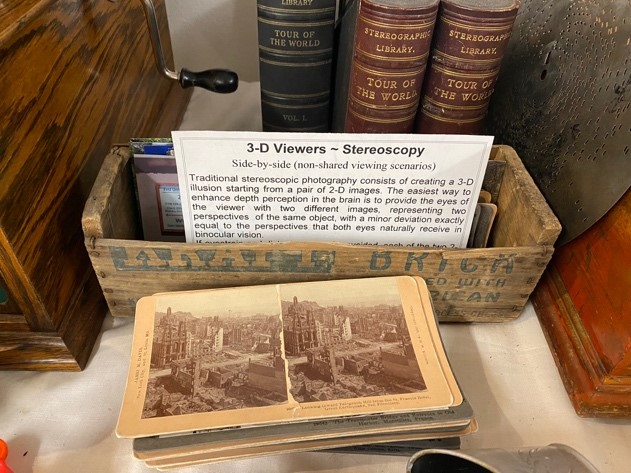
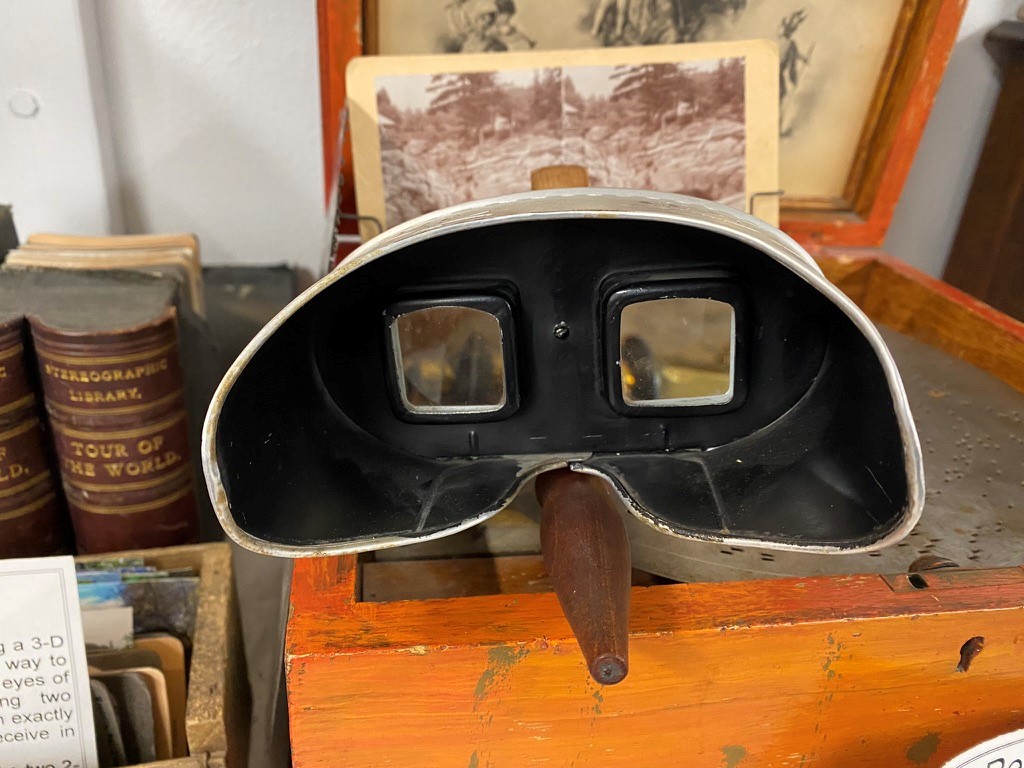
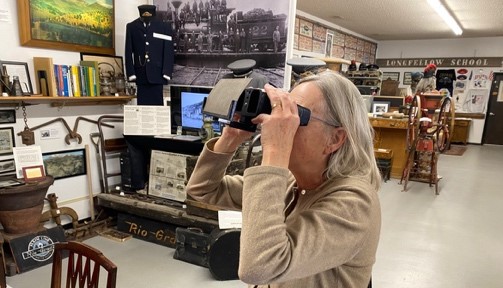
Library Corner
by Joy Jackson
Salida Regional Library Archivist
Don’t Mess with SHS

These boys look like they are posing for a Filson advertisement; in fact, they are the Salida High School football team. The image was taken by a traveling photographer on October 24, 1910 and there is a lot of historical significance to it.
Ballard French, second row in the black sweater, had the image reproduced about forty years after it was taken at the Morris Photo Shop, which was located in the old Hay Studio at 229 F. Ballard graduated from SHS in 1912 and after working for the railway mail service, he later became a dentist.
The school behind the boys is the Salida High School, which was built in 1910 and opened for the school year that August. Located on the corner of D and 9th Streets, it burned down in April 1962.
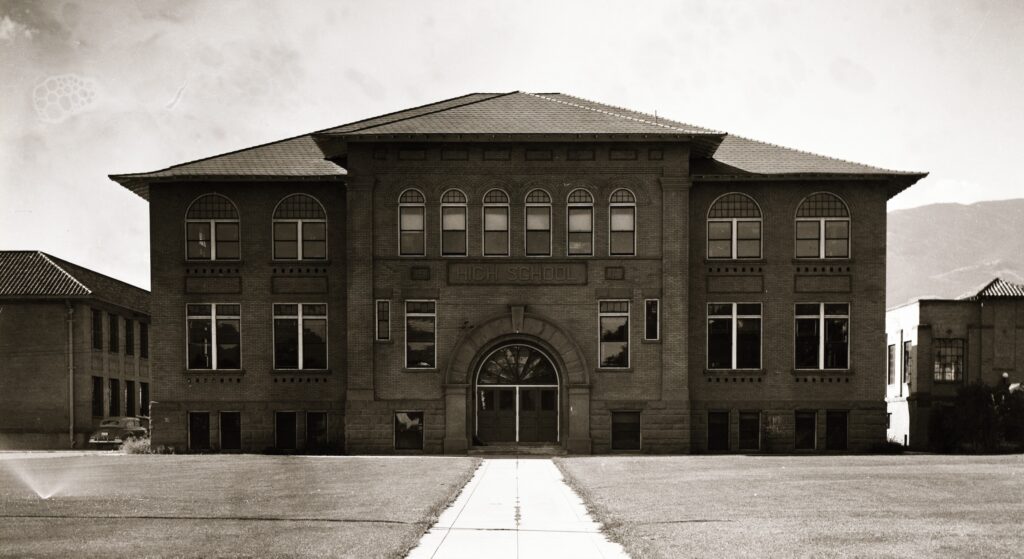
The SHS football team had only recently come back from tragedy when this team picture was taken. In 1907, the team was at an away game at Leadville and it soon devolved into a frenzied affair. Most of the Leadville spectators were on the field shouting instructions to their players and shouting down any referee calls that were in favor of Salida. During the game, Salida sophomore Arthur Cope was tackled and severely injured. He collapsed to the ground, his spine broken. The Leadville doctors were not optimistic about his outcome and he was transported by train back to Salida where he died at the Red Cross Hospital a few days later. It was a shock to the whole town, and especially to the players.
The SHS football team disbanded for the rest of that year and the next. It created some bad blood between the two towns for many years. In 1923, the SHS football team finally made a road trip up to Leadville and beat their rivals 25 to 19.
In the image, the players are sporting every type of football fashion from the era. Canvas lace-up football jackets and vests made with duck cloth are modeled by several of the players. This cloth was an improvement over wool sweaters and made it easier to evade the grasp of an opponent. Some of the players are wearing football pants made of moleskin cloth that had padding and reeds on the thighs. The two players in front laying down are sporting the new one-piece ‘Varsity Union Suit’ designed to thwart an opponent attempting to grab one’s pants in a tackle. Just two of the players were concerned about their looks; they are wearing rubber nose guards, which fitted over the head and protected nose and teeth. Intercollegiate wool varsity sweaters can be seen and were a must for staying warm on the sidelines.
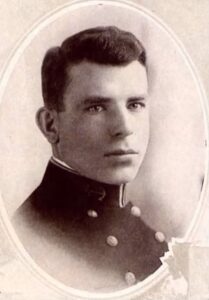
The captain of the football team, George Brewster, Jr. is seen seated holding the football. Handsome, athletic, and smart, George was a natural leader and popular with his teammates. During a game with Montrose, Salida was outmatched but fearless. Many of the players were knocked unconscious and according to accounts of the day, George’s face was streaming with blood before the first quarter ended. Salida lost 40 to 5 but earned the respect of the Montrose players for never giving up.
George graduated in 1912 and in the fall was admitted to the United States Naval Academy in Annapolis. He graduated in 1916 and began a career in the U.S. Navy. From 1929-1932, George was stationed in the East China Sea and commanded the USS Pope and Borie, both destroyers, and the USS Canopus, a submarine tender. In the 1930s, he was an instructor at the Naval War College in Newport, Rhode Island.
-Joy Jackson works at the front desk and in the Archives at the Salida Library. See more images and history at digital.salidalibrary.org
Crest Academy Visits the Museum
Seventh and eighth graders from Crest Academy in Salida visited the museum on November 7 to get an idea of how we display and catalog our exhibits. The students were working on a class project in which they created displays with information about historical events.
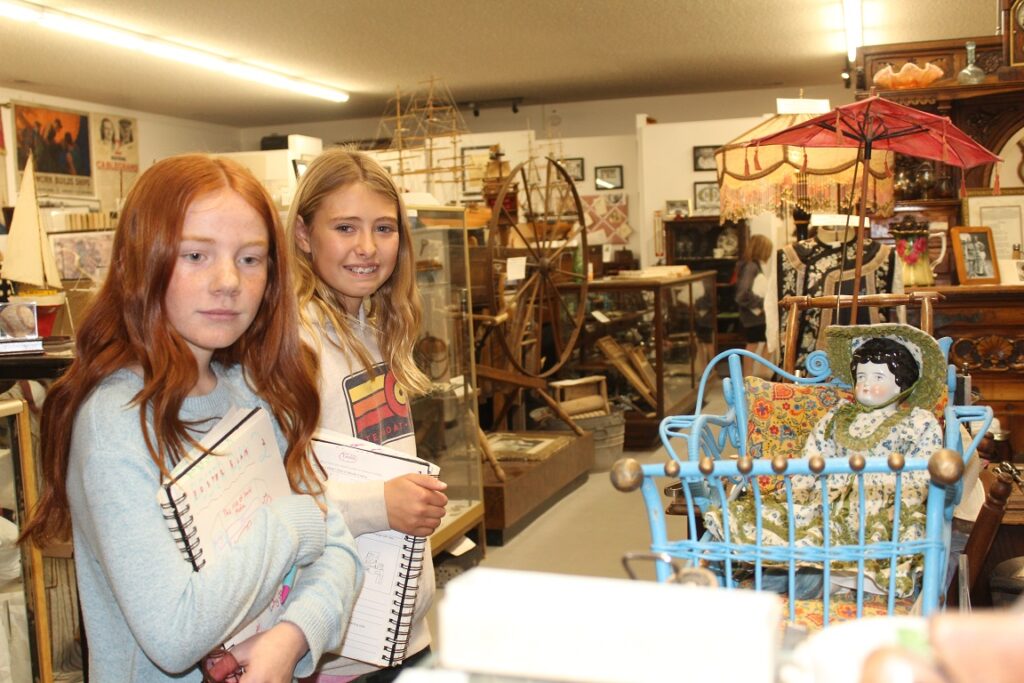
William J. “Bill” Murphy Display
Bill Murphy bought KVRH-AM radio in 1959, moved to Salida and operated it for the next four decades. His first broadcast of FIBArk, Salida’s annual whitewater boat race festival, was in 1960 and his last was in 1999. Murphy served on the boards of the chamber, FIBArk, Salida Golf Club and St. Joseph church parish council. He served on city council 1964-67. Upon his death in 2020, The Mountain Mail newspaper reported, “Salida lost a much respected and well-loved pillar of the community.”
KVRH, Salida, Heart of the Rockies began broadcasting with 250 watts of power in 1948, building a log cabin studio and transmitting tower on the mesa west of Salida. Under Bill Murphy’s management it became Salida’s pride, with local news, sports, human interest and total commitment to Salida. Starting as an AM station, KVRH became one of the first FM licensees in Colorado in the 1970s, branded as All Heart Radio. Murphy and his daughter Riley added a second FM station to their lineup in 1996. KVRH supported scouting and 4-H programs, held radiothons for local charities and sponsored the annual KVRH Early Birdie golf tournament. In 2000, ownership of KVRH AM/FM and KBVC passed to Three Eagles Communications, L.L.C. and Headwaters Media L.L.C.
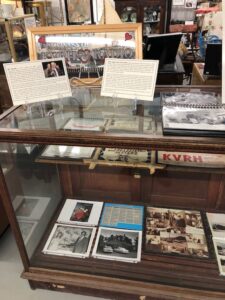
2025 Museum Calendar
The 2025 museum calendar is now available.. The calendar is titled “Upper Arkansas Valley Utes, The Mountain People”, and features photographs from the museum of well-known Ute leaders and the mountains named after them. The calendars are available for purchase at the museum for $15, and will soon be available at several Salida businesses. Salida businesses selling the calendar will include Hodge Podge, Old Log Cabin Antiques, FatTees, The Salida Five and Dime, Mixing Bowl, and the Salida Chamber of Commerce.
Bob Campbell, our museum board President, put the calendar together. We thank Bob for doing a really professional job of combining photographs and information about them to create another exciting museum calendar.
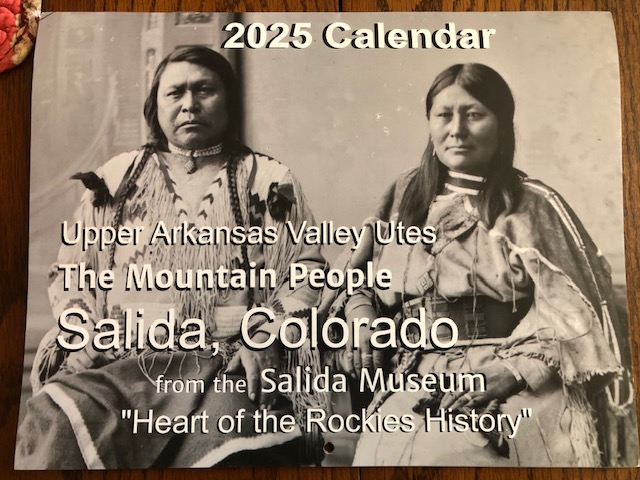
Museum Board of Directors
The current museum board of directors is comprised of the following:
President, Bob Campbell
Secretary, Earle Kittleman, 719-221-3685
Treasurer, Larry Kovacic, 505-280-4831
Board Member, Judith Kinzie, 719-539-9439
Board Member, Arlene Shovald, 719-539-3139
Board Member, Bonnie Konopka, 505-270-6523
Board Member, Terry Pintane, 719,221,4177
We wish to thank Margaret Dean, who volunteers as a board representative from Maysville. The members of the South Arkansas Landowners Association (SALA), comprising residents in the Maysville area, do a lot of work taking care of the historic Maysville School, which is owned by the museum. We appreciate their efforts to maintain the school as a historic landmark and look forward to a long and fruitful relationship.
Museum Docents
Giff Kriebel
Terry Pintane
Dennis Kapela
Earle Kittleman
Bonnie Konopka
Larry Kovacic
Many thanks go to our docents; they are the reason the Salida Museum can be open to visitors.
If you are interested in becoming a board member and coming to one meeting a month (minimal commitment, few summer meetings), let us know. We would be very happy to talk to you about joining our team. Our board meetings are open to the public, so if you want to attend one and find out if you’re interested, the meetings are the third Wednesday of the month, 11:00am, at the museum.
Support the Salida Museum
The Salida Museum Association is an all-volunteer non-profit organization that relies on donations, memberships, admissions and limited fundraising to remain operational. You can help support the museum by making a donation or becoming a member.
Donation – any amount appreciated
Annual Membership – $15, includes 5 free visits
Lifetime Membership – $100, includes unlimited free visits
Memberships and donations are tax deductible. Send your payment to the address listed below, use our website to remit with PayPal, or join when you come in to see the museum. You will receive an acknowledgement letter for tax purposes. (make sure we have your address)
Salida Museum Association
406 1/2 W. Hwy 50, Salida, Colorado 81201
salidamuseum@gmail.com
719-539-7483
For more museum information, see our website or Facebook page.
